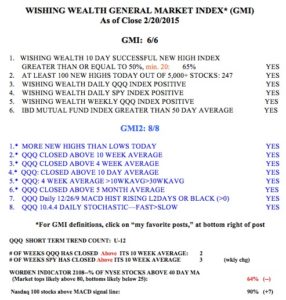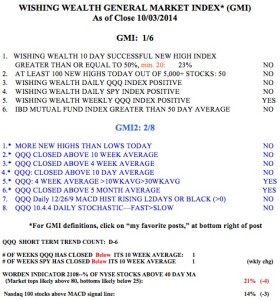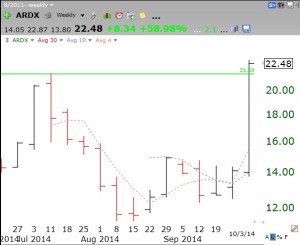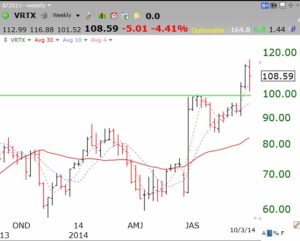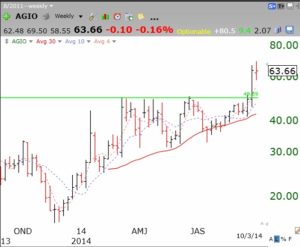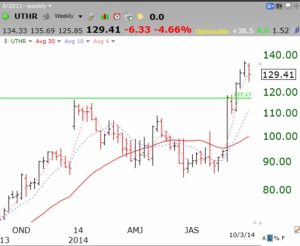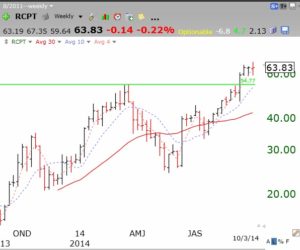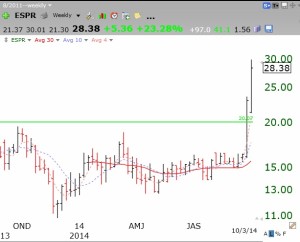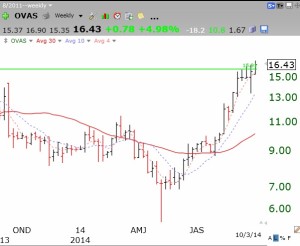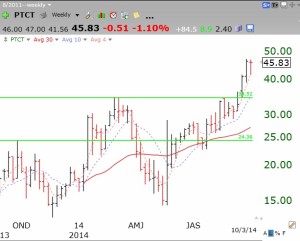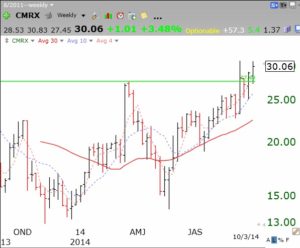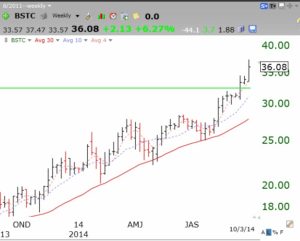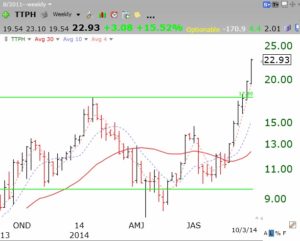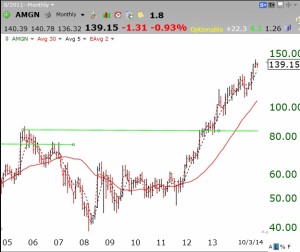The GMI now registers 1 and flashed a Sell signal as of Friday’s close and my QQQ short term trend has turned down. Sometimes these changes in short term trend do not persist for more than a day or two, so I watch the market action very closely. There are a lot of other technical indicators that make me very cautious this week. The QQQ is sitting on its 10 week average. A weekly close below it (about 98) would be a significant sign of a weakening in the longer term trend. Failure of the bounce back above its daily 15.2 BB would be a serious sign of short term weakness. Both of these areas of support remain around 97.80-98. I always look for a close below important support levels before I act. I therefore restrict most of my daily trading to around 3:45 PM when I can estimate where things will close. If I trade earlier in the day I am often whipsawed by the action. IBD still sees the up-trend under pressure, another sign for me to be cautious. There were 46 new highs and 214 new lows on Friday, the opposite of what I would expect from a healthy rising market. Again, the action was different for tech stocks versus other stocks: 63% of all stocks rose Friday compared with 91% of the Nasdaq 100 non-financial tech stocks. On the plus side, the T2108 is now at 25%, closer to where bounces occur and the put/call ratios have been above 1 for two days……..
Four Nasdaq 100 stocks have a 15.4 daily stochastic above 80, representing recent price strength. They are VRTX, SIAL, FB, EBAY. While a reading above 80 is often considered over bought, strong stocks can remain at this level for long periods. The signal I watch for is a decline in the stochastic below 80 after being above for a number of days.
I don’t often nail a break-out, but did you see what AGIO did on Friday after I had posted about it Thursday night?
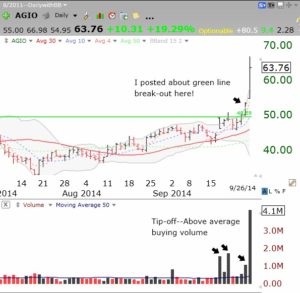
I had no inside information. I just let the technical indicators and the news alert me that something was up. I learned from my stock buddy, Judy, who picks a lot of biotech winners, that one can learn a lot by reading news reports about drug companies’ promising clinical trials and scheduled presentations. Being in the research field, I know that one schedules public presentations to highlight good research results. The astute reader might have read last week that AGIO has a big presentation coming up about their research on new drugs they are developing. And while it pains me to say it, Jim Cramer has been crowing about AGIO.
I run a TC2000 scan every night for bio-tech stocks that have advanced that day on unusually high volume. Then Judy goes to work researching them to uncover the gems. The unusual trading volume is a clue to finding bio-tech gems like AGIO and even VRTX before they take off. The exciting money to be made is in the revolution occurring in drug development.
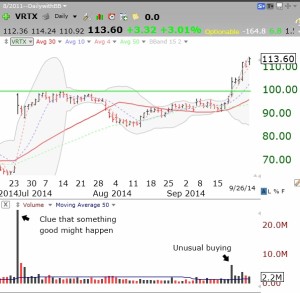 Now, I know that some of you are going to write me to request the stocks that came up in my bio-tech scan from last night. If I listed the stocks, I suspect some people would just buy them and not do the due diligence to uncover the probable winners. And this, even though the market up-trend is in doubt! The scan did uncover 7 stocks (XXXX, XXXX, XXXX, XXXX, XXXX, XXXX, XXXX). You will just have to stay tuned to see if I write about them–after doing the necessary research. I maintain a growing watch list of all stocks that have recently been detected by this bio-tech scan. I monitor them over time for signs of strength and news….
Now, I know that some of you are going to write me to request the stocks that came up in my bio-tech scan from last night. If I listed the stocks, I suspect some people would just buy them and not do the due diligence to uncover the probable winners. And this, even though the market up-trend is in doubt! The scan did uncover 7 stocks (XXXX, XXXX, XXXX, XXXX, XXXX, XXXX, XXXX). You will just have to stay tuned to see if I write about them–after doing the necessary research. I maintain a growing watch list of all stocks that have recently been detected by this bio-tech scan. I monitor them over time for signs of strength and news….
This week is critical for telling me the market’s probable trend. So I am unlikely to buy anything right now. Will Friday’s rebound hold???
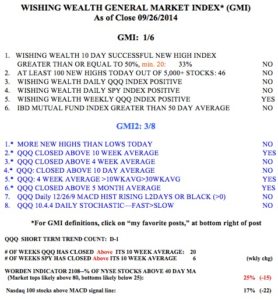
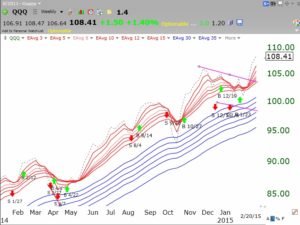 It is clear to me that a GMI Sell signal should only be used by me for short term trading decisions. Last week I posted that prior major market tops have been signaled when the shorter averages declined below the longer term averages. I should therefore probably remain invested long term in the market (at least in my university pension account) as long as the RWB pattern is in place, even when the GMI signals Sell. I am reinvesting my pension funds back into mutual funds. In the future I will use the GMI signals only to guide my shorter term trading in my more speculative accounts. I will heed the GMMA chart for longer term trends. One must never stop learning and adapting when it comes to the markets….
It is clear to me that a GMI Sell signal should only be used by me for short term trading decisions. Last week I posted that prior major market tops have been signaled when the shorter averages declined below the longer term averages. I should therefore probably remain invested long term in the market (at least in my university pension account) as long as the RWB pattern is in place, even when the GMI signals Sell. I am reinvesting my pension funds back into mutual funds. In the future I will use the GMI signals only to guide my shorter term trading in my more speculative accounts. I will heed the GMMA chart for longer term trends. One must never stop learning and adapting when it comes to the markets….